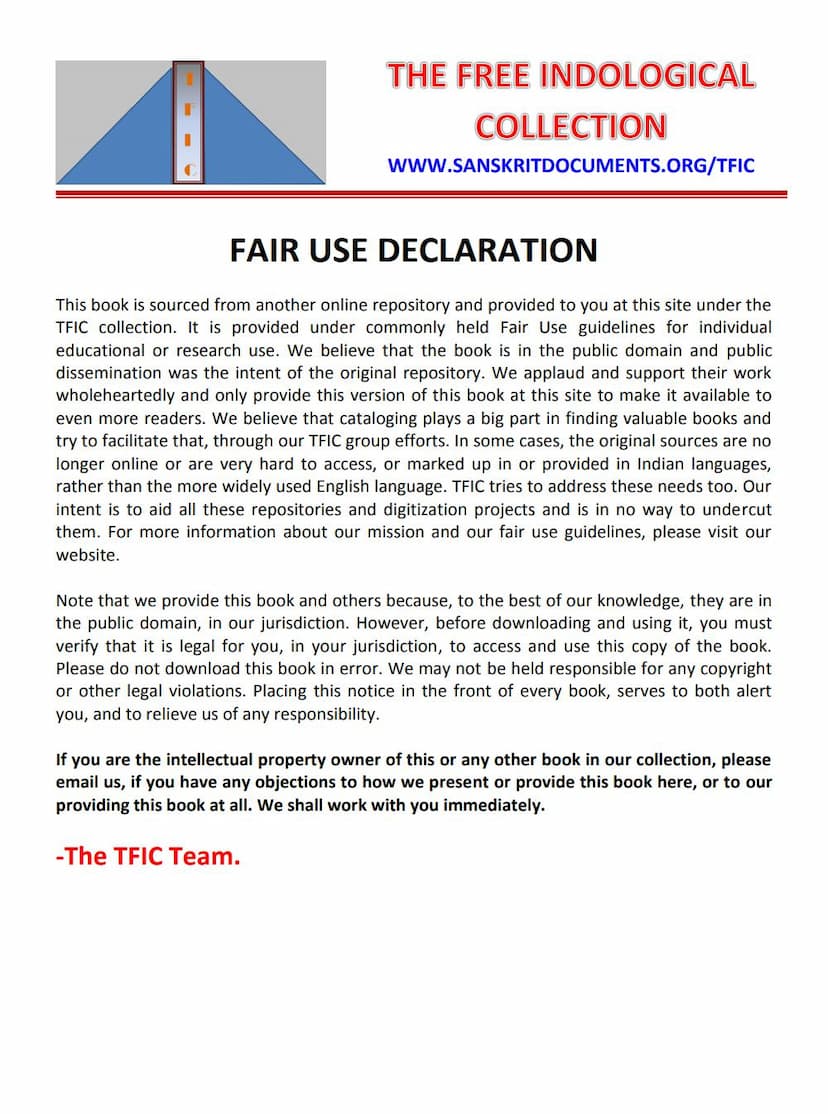Jain Sahitya Sanshodhak Part 2
Added to library: September 2, 2025

Summary
Here's a comprehensive summary of the provided Jain text, "Jain Sahitya Sanshodhak Part 2," focusing on the content and scholarly contributions:
Book Title: Jain Sahitya Sanshodhak Part 2 Author: Muni Jinvijay Publisher: Jain Sahitya Sanshodhak Samaj, Pune Catalog Link: https://jainqq.org/explore/010005/1
This volume of "Jain Sahitya Sanshodhak" is a significant scholarly work dedicated to exploring various facets of Jain history, literature, and philosophy. Edited by Muni Jinvijay, it presents a collection of well-researched articles by prominent scholars in the field. The publication aims to shed light on the rich and often overlooked aspects of Jain traditions, making them accessible to a wider audience.
Key Themes and Articles:
The table of contents reveals a diverse range of topics, indicating a comprehensive approach to Jain studies:
-
Yoga Darshan (Yoga Philosophy) by Pt. Sukhlalji: This article delves into the philosophical underpinnings of Yoga, particularly within the Jain context. It explores the concept of "Yoga" as a means to achieve spiritual development, aligning it with Jain principles of self-control and spiritual progress. The author likely discusses the historical development of Yoga, its presence in Vedic, Jain, and Buddhist traditions, and highlights India's significant contribution to its evolution. The article likely examines the relationship between knowledge and Yoga, categorizing Yoga into practical and spiritual forms and tracing its evolution through various texts like the Upanishads, Yoga Sutras, Bhagavad Gita, and Jain Āgamas. It also discusses the emergence of Hatha Yoga and its presence (and sometimes rejection) in Jain and Buddhist literature.
-
Kunrpal Sonpal Prashasti by Prof. Banarsi Das Jain (M.A.): This is a detailed epigraphical study of an inscription found in Agra. Prof. Banarsi Das Jain meticulously analyzes the script, language, and historical context of the inscription. The article likely discusses the inscription's content, which details the construction and consecration of a temple dedicated to Shri Shreyans Nath Ji by two brothers, Kunrpal and Sonpal, during the reign of Emperor Jahangir. It likely provides genealogical information about the family, their societal standing (Oswal Jñātī, Loḍhā gotra), and discusses discrepancies in historical dating (e.g., the day of the week for a specific date). The article also touches upon the associated inscriptions on idols, offering insights into the patronage of Jainism during that period.
-
Somdev Suri's Niti Vakyāmrita (Niti-Vakyamrita) by Pt. Nathuramji Premi: This article provides an introduction and analysis of the "Niti Vakyāmrita," a significant work on political science and statecraft authored by Somdev Suri. Pt. Premi highlights the work's value as a comprehensive guide to governance, drawing from earlier political treatises. He likely discusses Somdev Suri's life and lineage (Deva sangha), his intellectual prowess as a logician and poet, and his extensive knowledge of various philosophical schools (Jain, Vedic, Buddhist). The article likely compares Niti Vakyāmrita with other prominent political texts like Kautilya's Arthashastra and Kamandaka's Nitisara, noting similarities and original contributions. The author also addresses scholarly debates regarding Somdev Suri's timeline and potential influences.
-
Jain Inscription from Keergram (Editorial): This editorial likely discusses an inscription found in the Shiva-Vaidyanath temple in Keergram (Kangra district, Punjab). The inscription, written in Jain Nāgarī script, mentions merchants Dolhan and Ālhan who commissioned a statue and the consecration by Devabhadra Suri. The editorial likely notes the inscription's significance in indicating the presence of Jainism in the region, even though no Jain temples currently exist there. It might also discuss the influence of Gujarati culture on the patrons and the lineage of the consecrating Acharya, connecting Devabhadra Suri to the Khartara Gacch tradition.
-
Mahakavi Pushpadanta and his Mahapurana by Pt. Nathuramji Premi: This extensive article is a biographical and critical study of the renowned Apabhramsha poet Pushpadanta and his magnum opus, the Mahapurana. Pt. Premi traces the evolution of Prakrit and Apabhramsha languages, situating Pushpadanta's work within this linguistic history. He discusses Pushpadanta's life, his possible origins, his intellectual and spiritual leanings (likely Jain), his relationship with patrons like Bharat Mantri, and the socio-political context of his time, particularly the reign of rulers like Krishna Deva. The article likely analyzes the structure, themes, and poetic brilliance of the Mahapurana, including its sections on the lives of Tirthankaras and other significant figures. It also explores the manuscripts and commentaries available for Pushpadanta's works.
-
Prof. Lüders and the Āvaśyaka Sūtra by Muni J. Vi. and K. Pre. Modi: This article focuses on the scholarly contributions of German Indologist Prof. Heinrich Lüders to the study of the Āvaśyaka Sūtra, a foundational text in Jainism. The authors likely detail Lüders' research methodology, his efforts to reconstruct and analyze the Āvaśyaka Sūtra literature, including its commentaries and related texts. They might discuss his published works, such as "Die Āvaśyaka-Erzählungen," and his research on the concept of Gaṇadharavāda within the Āvaśyaka Sūtra and its commentaries by Jinabhadra Kṣamāśramaṇa and Haribhadra Suri. The article probably highlights Lüders' meticulous approach, his engagement with various manuscripts, and his insights into the philosophical and historical aspects of this important Jain text.
-
Self-Study-Review: This section likely contains a review or reflection on the practice of self-study and its importance within the Jain tradition. It may discuss the principles of introspection, learning from scriptures, and the role of self-discipline in spiritual growth.
Overall Significance:
"Jain Sahitya Sanshodhak Part 2" stands out for its commitment to:
- Scholarly Rigor: The articles are characterized by in-depth research, critical analysis, and reliance on primary sources.
- Interdisciplinary Approach: It bridges linguistics, history, epigraphy, philosophy, and literature to provide a holistic understanding of Jainism.
- Accessibility: By presenting complex topics in a clear and engaging manner, the volume aims to make Jain heritage accessible to both scholars and the general public.
- Preservation and Dissemination: The journal plays a crucial role in preserving and disseminating Jain knowledge, particularly by bringing to light rare inscriptions, texts, and scholarly analyses.
The volume serves as a valuable resource for anyone interested in the intricate and profound traditions of Jainism, offering deep insights into its intellectual and historical landscape.